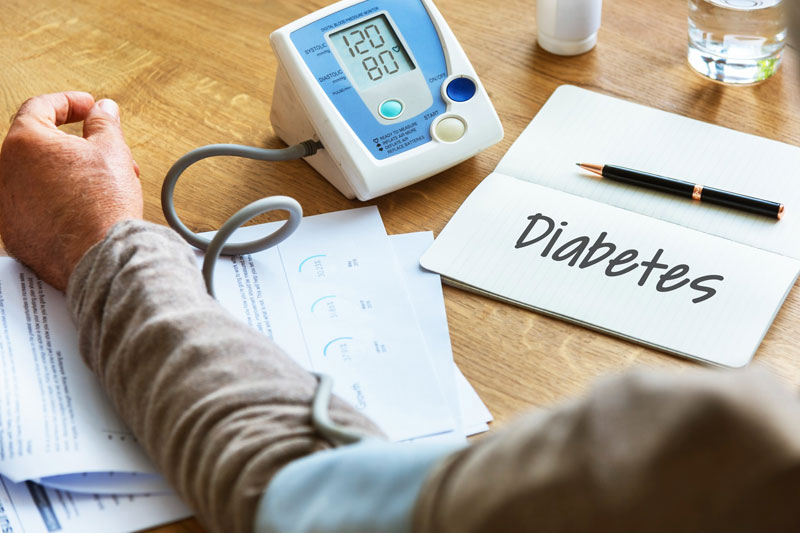Diabetes is considered as a serious health condition and if it is not managed properly it can lead to life threatening conditions. Even though Type 2 diabetes is more common than Type 1 diabetes, both the conditions require constant monitoring of blood sugar levels. In the backdrop of increasing cases of diabetes, endocrinologists have to attend to a considerable number of patients on a daily basis and correspondingly endocrinology medical billing has to be managed. Inarguably, providing better treatment to their patients will be the primary objective of the doctors.
By utilizing outsourced medical coding services, prompt reimbursement is assured with error-free documentation and the complexities associated with coding are efficiently dealt with.
For diagnosing both Type 1 and Type 2 diabetes, endocrinologists direct patients to undergo Glycated Hemoglobin Test (A1C) test to analyze average blood sugar level tests of the past two to three months.
As a primary step of diagnosis, patients have to undergo Glycated Hemoglobin Test. The family history of the patient is thoroughly examined. The patient might be told to take to take Random Blood Sugar Test or Fasting Blood Sugar Test if A1C test is unavailable or if the patient has some underlying condition which makes A1C test inaccurate.
CPT codes used to report Type 1 Diabetes- and Type 2 Diabetes-related medical procedures are as follows.
82009-84999: Chemistry Procedures
- 82947: The lab analyst performs a test to measure the amount of glucose in a patient’s blood using a method other than a reagent strip.
- 82948: The clinician performs a test to measure the amount of glucose in a patient’s blood using a reagent strip test method.
- 82950: The lab analyst tests a sample, typically blood, for glucose, also known as blood sugar. The collecting provider takes the sample at a set time after the patient has ingested an amount of liquid or a meal with a high glucose content. Clinicians commonly use this to test for diabetes.
- 82951: The lab analyst performs a test to measure the amount of glucose in a patient’s blood at three different times: initially while fasting and two more times, each at a specific time after the patient takes an oral dose of glucose.
- 82952: Following a glucose tolerance test with three specimens, the lab analyst performs an additional test to measure the amount of glucose in the patient’s blood, typically following an additional oral glucose dose.
- 83036: This A1C test measures the amount of sugar sticking to the red blood cells, displaying the result as a percentage. This gives the physician an understanding about the blood sugar level of the patient for the preceding three months.
- 83037: The analyst performs a test using a drop of blood obtained by finger stick or venipuncture from the patient to rapidly measure the level of glycoslylated hemoglobin, HgbA1c. The analyst uses a device the FDA has approved for home use. This test is an indication of glucose control over a three to four month period and results show as a percent of total hemoglobin.
ICD – 10 Codes Used to Report Type 1 Diabetes Mellitus
- E10: Type 1 Diabetes Mellitus
- E10.1: Type 1 diabetes mellitus with ketoacidosis
- E10.10: Type 1 diabetes mellitus with ketoacidosis without coma.
- E10.11: Type 1 diabetes mellitus with ketoacidosis with coma
- E10.2: Type 1 diabetes mellitus with kidney complications.
- E10.21:Type 1 diabetes mellitus with diabetic nephropathy
- E10.22: Type 1 diabetes mellitus with diabetic chronic kidney disease
- E10.29: Type 1 diabetes mellitus with other diabetic kidney complication.
- E10.3: Type 1 diabetes mellitus with ophthalmic complications.
- E10.4: Type 1 diabetes mellitus with neurological complications
- E10.5: Type 1 diabetes mellitus with circulatory complications.
- E10.6: Type 1 diabetes mellitus with other specified complications.
- E10.1: Type 1 diabetes mellitus with ketoacidosis
ICD 10 Codes Used to Report Type 2 Diabetes Mellitus
- E11: Type 2 Diabetes Mellitus
- E11.0: Type 2 diabetes with hyperosmolarity
- E11.00: Type 2 diabetes with hyperosmolarity without nonketotic hyperglycemic – hyperosmolar coma
- E11.01: Type 2 diabetes with hypersmolarity with coma.
- E11.1: Type 2 diabetes mellitus with ketoacidosis.
- E11.2: Type 2 diabetes mellitus with kidney complications.
- E11.21: Type 2 diabetes mellitus with diabetic nephropathy
- E11.22: Type 2 diabetes mellitus with diabetic chronic kidney disease.
- E11.29: Type 2 diabetes mellitus with other diabetic kidney complication.
- E11.0: Type 2 diabetes with hyperosmolarity
Outsourced medical billing enables endocrinologists to extend quality services to their patients rather than getting stuck in procedures essential for speedy reimbursement without claim denials.




